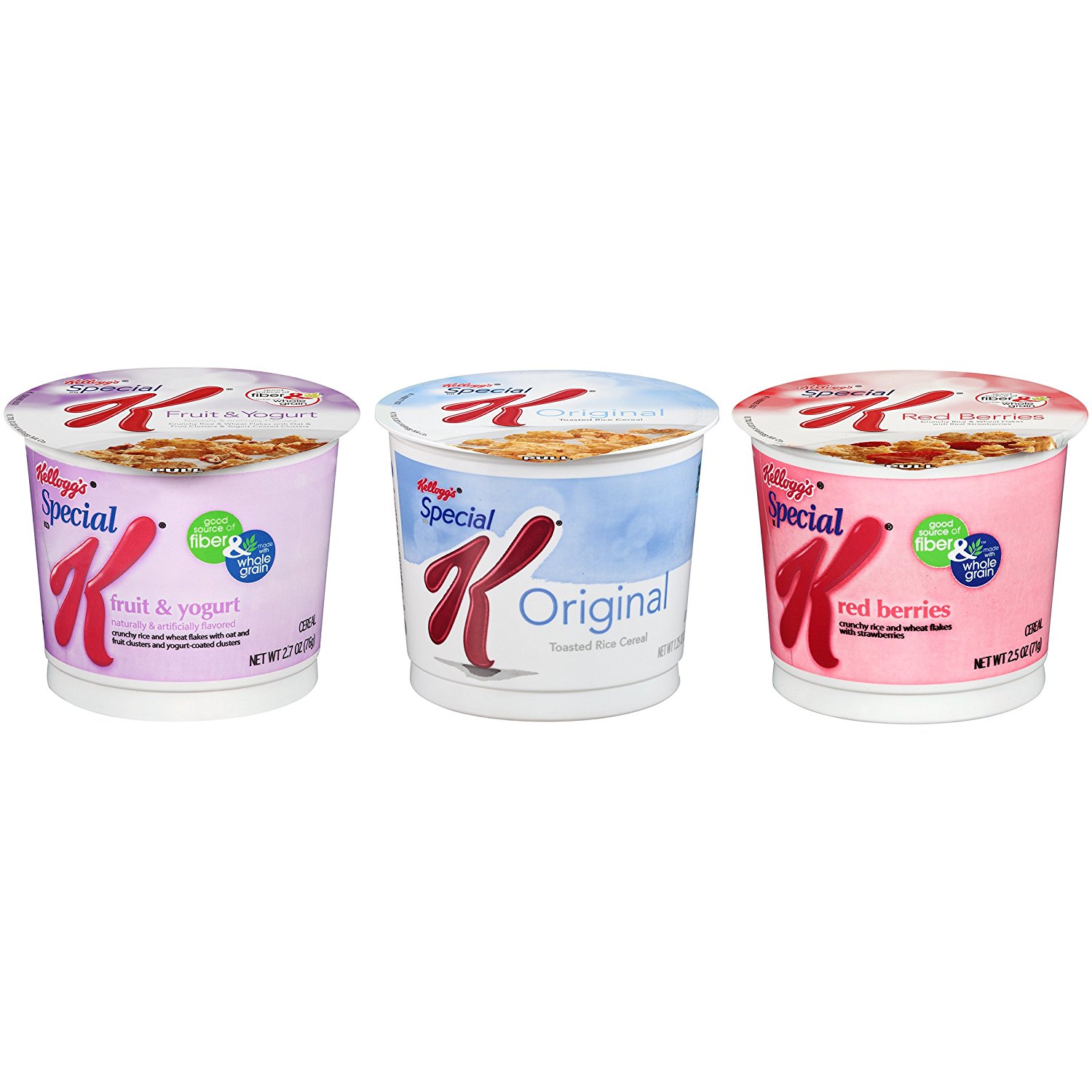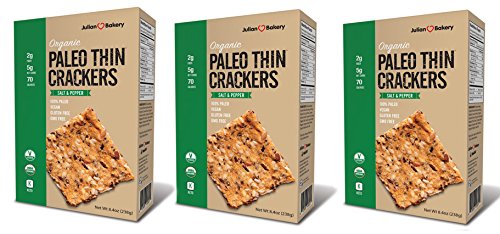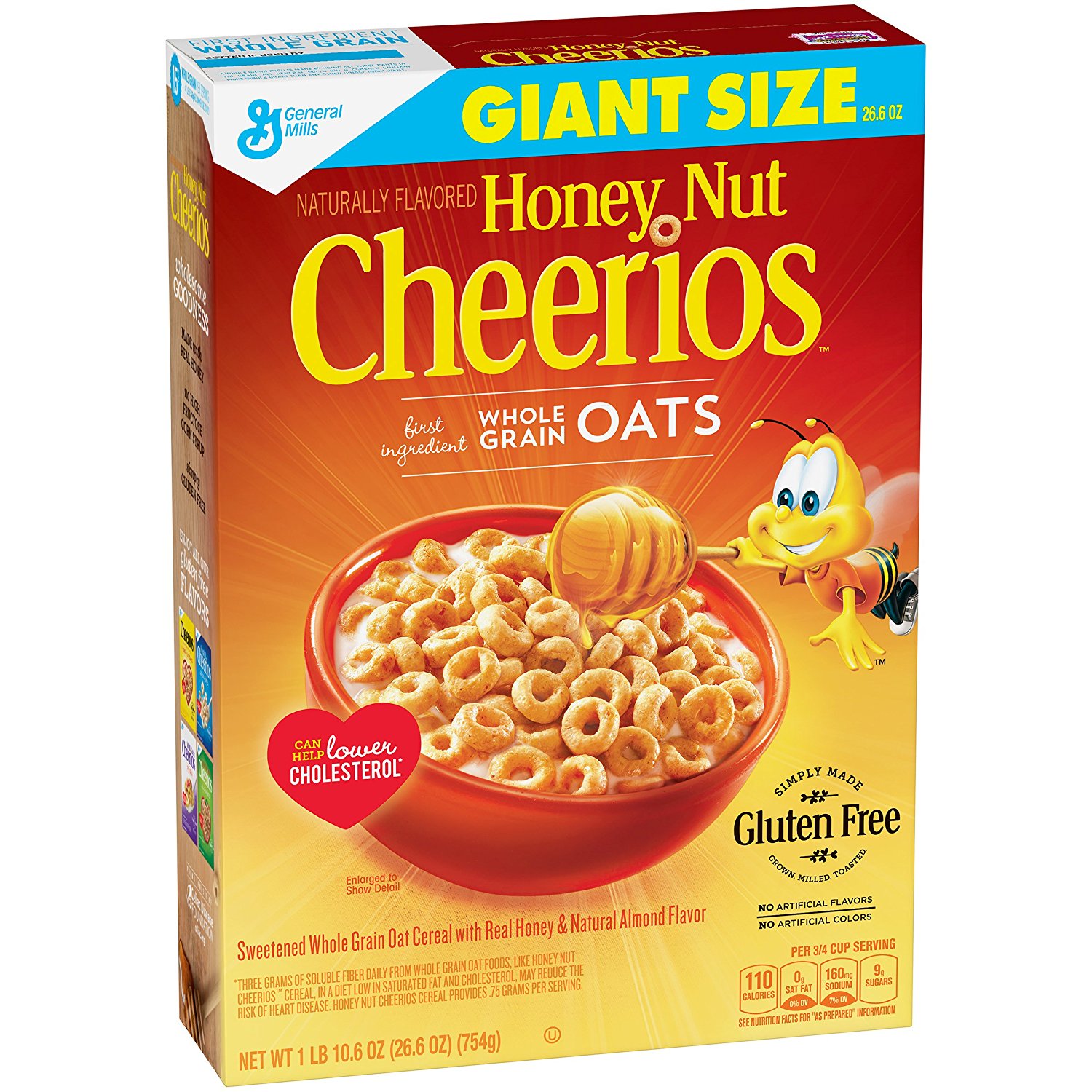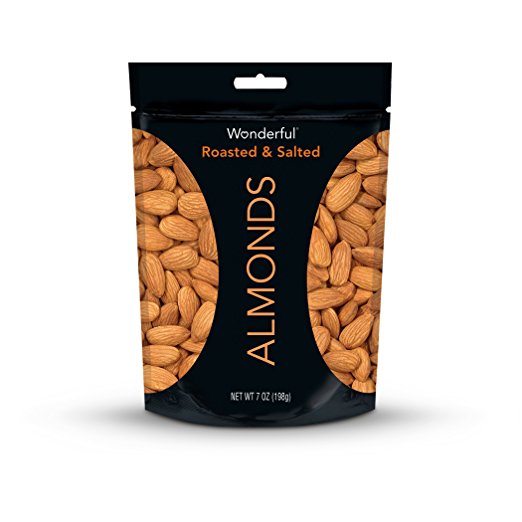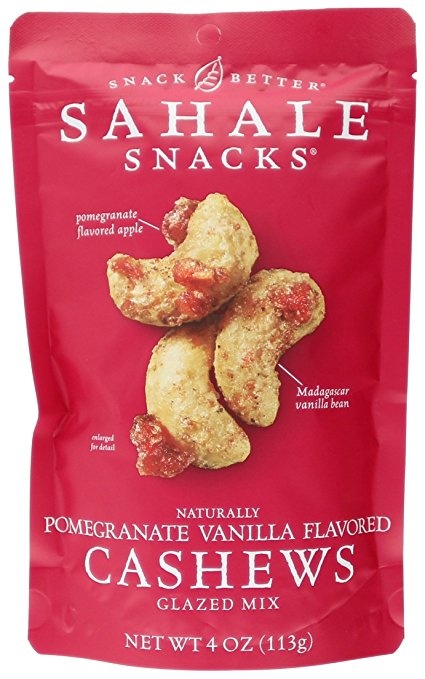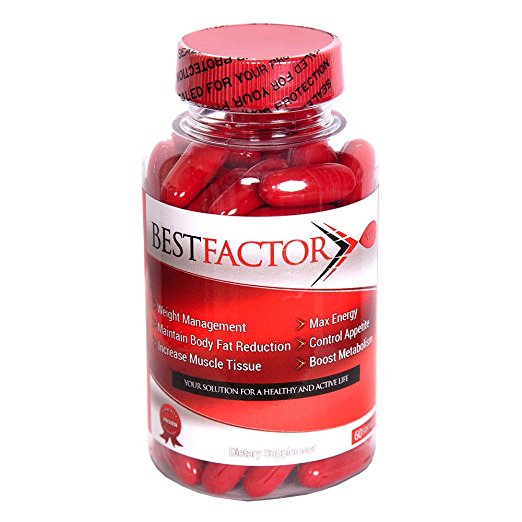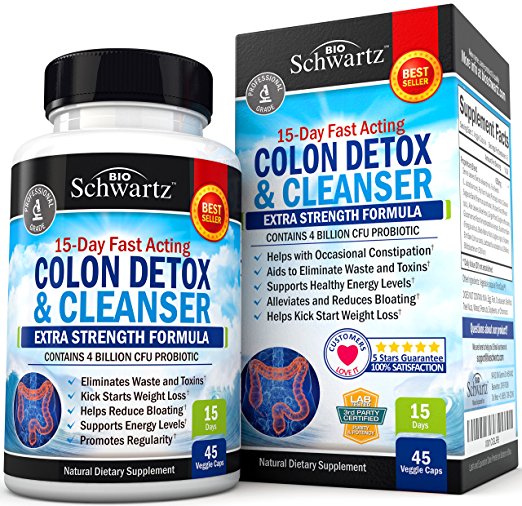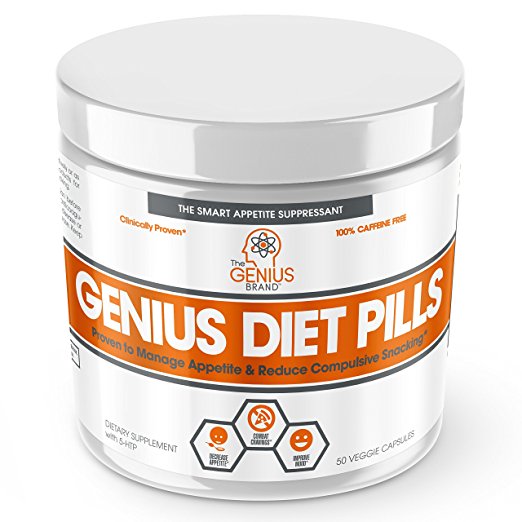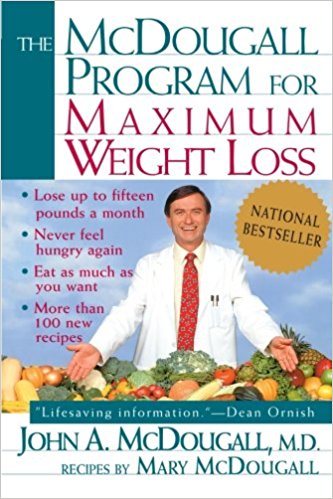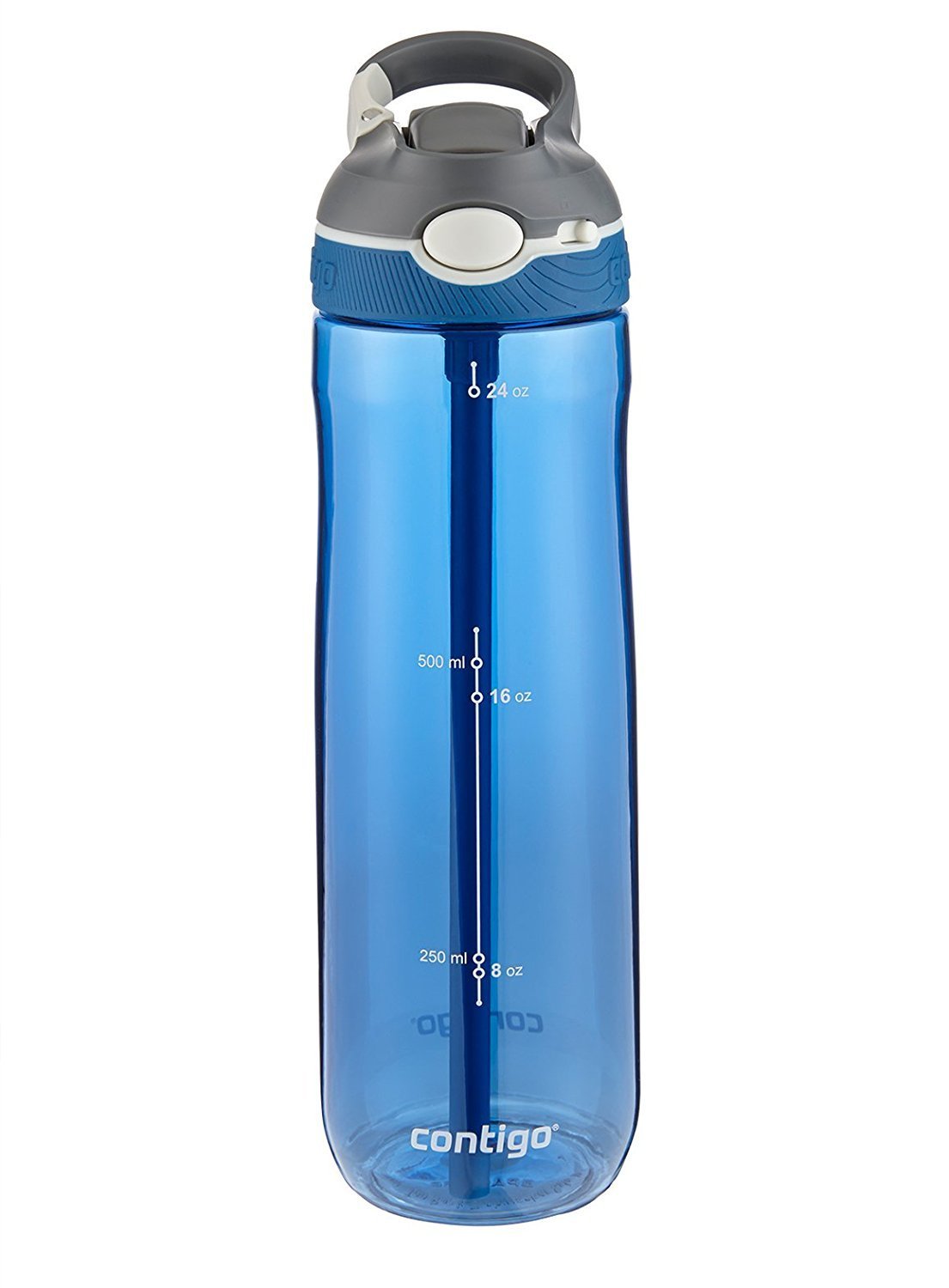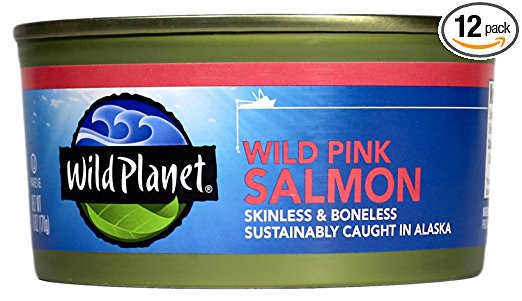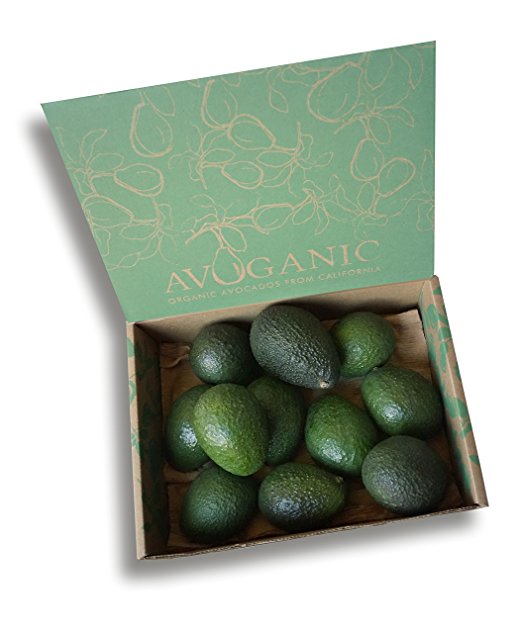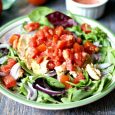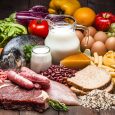Mistake 1: Basing Your Meals Around Carbs
A common mistake people make with their diet is basing their meals around carbohydrates. Whether it’s spaghetti, pizza, a casserole or even a sandwich you are having for dinner, you’re likely to be slowing your metabolism. Carbs can slow down the metabolic process causing weight plateaus and even weight gain. Basing your meals around protein, and balancing them with “good” carbs, will help kick start your metabolism.
Refined carbohydrates are in foods like white rice, white bread, pasta and potatoes. They are digested easily and expend very little energy, leaving your metabolism in a slump.
Types of Protein
Try basing meals around lean proteins like lean cuts of beef, fish, chicken, pork loin or turkey. For vegetarians, some high protein choices include soy products, chia seeds, lentils, Ricota cheese and quinoa. Add in healthy carbs including root vegetables like beets, spring onions and sweet potatoes, and whole grains such as brown rice. Proteins require more energy to digest than any other macronutrient. The calories you burn from digestion alone account for up to 15% of your daily energy expenditure.
Protein Throughout The Day
Plan meals and snacks throughout the day to keep hunger from creeping up. This is a great way to prevent overeating and keep the metabolism steadily working. If you are on the go all day, try a whey protein shake as a snack. Whey is a protein found in milk that takes almost as long to digest as protein found in beef. Depending on the brand, protein powders have between 20 and 30 grams of protein per serving. A protein shake before exercise has been found to promote an increase muscle protein synthesis, which can mean an increase in muscle instead of fat. It can also help keep you energized during a long workout.
The Right Carbs
Your thyroid is the thermostat for your metabolism. Don’t cut out carbs completely. Make better choices. Beans, leafy vegetables and whole grains are complex carbs that also take longer to digest than refined, white carbs. They contain essential dietary fiber, which also aids in slower digestion and more energy expenditure. Cutting carbs completely can cause reduced thyroid functioning and a slower metabolism.
Adding lots of protein as well as healthy carb choices to your diet can lead to a healthier metabolism. It can also help keep you feeling fuller longer, and cut carb cravings. Experts even debunk the myth that you should not eat four hours before bedtime. Eating a small meal containing protein and fiber about an hour before bed can help keep your metabolism working at full speed, and you will burn more calories while you sleep.
Recommended foods with carbs:
Mistake 2: Eating 5-6 Mini Meals Per Day
It’s all over the television, the Internet and magazines: The solution to weight loss is eating several small meals throughout the day. While this is a great way to keep full, cut cravings and keep the metabolism working at a steady pace, it’s not realistic for most. It is a challenge to have time for breakfast, much less finding the time to consume six meals per day. Many people try doing the right thing and end up making their way to the drive-thru or grabbing a candy bar because it’s convenient. A better solution is to plan for meals and eat when it is convenient for you. Eat when you are hungry and make better choices.
Your plate at each meal should have one protein, one quality carbohydrate or healthy fat and vegetables. Choosing natural foods is always best. Processed foods will contain excess sugar and sodium. If the quality of the calories on your plate is high in saturated fat and sugar, your diet will have a negative impact on your health and weight. In order to have healthy choices, shop for healthy foods. Start on the outer edge of your grocery store and choose produce, deli foods, meat and dairy, first.
Thinking About Snacks
Snacks are an important part of your diet, too. They help control hunger and cravings. Nuts, whole grain crackers, cheese, yogurt and protein powders are all choices that can go in a plastic bag or lunch cooler for on-the-go people. Plan out a few snacks for the day. Even if you are staying at home, pre-planned, portion controlled, snack bags are a great way to ensure you won’t overeat or go for other unhealthy snacks.
Considering Breakfast
Get up in time for a healthy breakfast, if you’re hungry. Start out with a protein like eggs, milk, lean turkey bacon or other lean meat. Protein keeps you feeling fuller for longer. Add in fruit or grab some to eat on the go.
Remembering The Lifestyle Change
A diet shouldn’t feel like a diet at all. It should feel like a permanent lifestyle change. This is why eating out should never feel like an obstacle you have to overcome. It is a part of everyday life. Feel confident that you can make the right choices. Start out with a big, leafy salad with dressing on the side. Remember that you can eat as much of the salad as you want, and it will help fill your stomach before the main course. Try ordering fish or lean meat that is broiled or grilled instead of fried.
Remember that not every day will be identical. It’s not about how many meals you consume in a day. Portion control is the key to any diet whether you are eating three larger meals or six smaller meals. Find a routine that fits your schedule, and plan accordingly.
Recommended snacks:
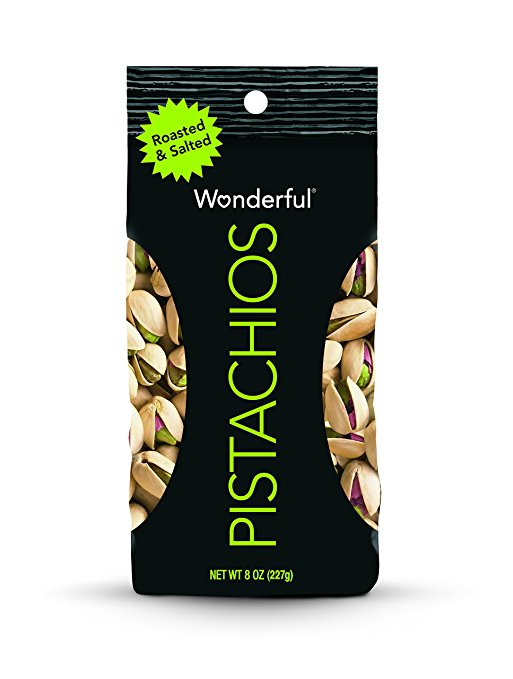
Wonderful Pistachios
Mistake 3: Taking Diet Pills
For years, people have searched for a shortcut to weight loss. Diet pills have continued to fly off the shelves, though it has been proven they do very little to help with weight loss, and even less to maintain long-term weight loss. Diet pills are ineffective and some are down right dangerous.
The Origins of Diet Pills
Diet pills were initially created to help the morbidly obese lose weight and prevent diabetes. Unfortunately, the diet pill market has become a million dollar industry, many of them being sold over-the-counter. Author Anne M. Fletcher describes diet pills in her book titled “Thin for Life,” as one leg of a four-legged stool; the other three legs being diet, exercise and behavioral changes. Take out any of the three other legs, and the diet pills are useless. Diet pills are not a realistic solution to a healthier lifestyle.
How Diet Pills are Supposed to Work
Diet pills, prescribed or over-the-counter, do one of two things. One type helps suppress appetite. The other is a fat blocker that alters the absorption of fat in food. Diet pills that suppress the appetite usually contain Hoodia, fenfluramine (Phen-Fen) and dexfenfluramine or a combination of the drugs. They can cause high blood pressure, increased heart rate, headaches and sometimes even behavioral changes.
A popular prescription fat blocker, turned over-the-counter diet pill, has been shown to increase weight loss by only five to seven pounds. It also has some nasty side effects including stomach upset and loss of bowel control. The Food and Drug Administration (FDA) is also researching this drug to determine if it causes liver damage. In addition to blocking fat, it can also block the absorption of fat-soluble vitamins A, D, E and K.
Side Effects of Diet Pills
Though there have harmful side effects with these diet pills, consumers continue to buy then. Recently, the Food and Drug Administration approved a new prescription diet pill that was shown to cause increased heart rate during clinical trials. Some patients also experienced metabolic acidosis, which is a condition that can cause hyperventilation and fatigue.
The bottom line is that there is no magic pill for weight loss. Even on a diet pill, dieters must control eating habits and exercise for them to be effective. Many would argue that the very small benefits are not worth the risk to their health. Diet pills also have a reputation for only working in the short term. For long-term weight loss, a permanent lifestyle change is the only way to go.
Mistake 4: Exercising At A Low Intensity (in the “fat burning” zone)
It was once thought that slow, steady cardiovascular exercise was the way to burn more fat and while working out, the target heart rate should reach between 50 to 85 percent of your maximum heart rate. Generally, maximum heart rate can be determined by subtracting your age from 220. To work in the “fat burning zone” you would stay between 50 and 70 percent of the maximum heart rate. While it is true that more calories from fat are burned during slower, steady cardio (about 60 percent), it doesn’t matter. The truth is, the real results come from creating a calorie deficit. High intensity training is the best way to burn more calories in a shorter amount of time.
High intensity cardio has been shown to burn more calories overall than slow, steady cardio. For example, 30 minutes of low intensity exercise will burn approximately 200 calories, while high intensity training for 30 minutes can burn approximately twice that with the same amount of calories coming from fat.
High-Intensity Interval Training
One form of training that has proven to work the best in the shortest amount of time is high-intensity interval training (HIIT). HIIT involves short burst sprints on foot, swimming, biking or other exercises, alternating with short periods of rest; for example, 10 one-minute sprints alternating with one minute of walking.
The Evidence
One study from Canada’s McMaster University found evidence that HIIT is a better way to burn calories more efficiently. The study showed it has the same effect as longer duration endurance training, and it is better at improving muscle mass than long, less strenuous workouts.
HIIT can be a strenuous workout. Those that are older, unconditioned or overweight may choose to start with lower intensity exercise. However, one study focused on an older group of patients (55 to 71 years old) with chronic heart failure, to see how they could benefit from HIIT. Results showed the workout was safe and effective, increasing their aerobic capacity with no harmful effects. Another study tested HIIT on people with metabolic syndrome and found that the group performing interval training improved their aerobic capacity by 30 percent as opposed to 16 percent with the group performing continuous, steady exercise.
Putting High Intensity Exercise Into Practice
Group fitness classes are a great way to try HIIT, but you can do HIIT from the comfort of your home as well. Use a treadmill to alternate running and walking, or a stationary bike pedaling at maximum intensity for one minute, resting for one minute. There are also aerobic videos offering HIIT techniques, or you can also make up your own routine. Remember, HIIT requires no equipment.
HIIT is a program that can be done for 30 minutes, three times a week and still be effective for weight loss, muscle gain and many other health benefits. Finally, you have time for exercise!
Mistake 5: Avoiding Strength Training
Cardiovascular training is a great way to lose weight and get in shape, but you rarely hear much about strength training. Strength training has a reputation for being only for bodybuilders. Many avoid the weight room altogether because of misinformation and intimidation. Strength training is one of the best ways to increase your metabolism by building muscle.
The Relationship Between Muscle and Metabolism
Have you ever wondered why men tend to have an easier time with weight loss than women? Men generally have more muscle mass and less body fat percentage than women. It’s the way their bodies are made, and muscle burns calories faster than fat. Muscle mass is one of the best ways to increase the resting metabolic rate.
Many times, women shy away from weight lifting due to fear weight gain, fear of bulky, manly muscles or intimidation by the weight room.
Bulky muscles are not common in women due to hormone make-up. Many bodybuilding women are in the gym four or more hours a day, eating a large amount of calories and taking supplements. Women that lift for strength training purposes should only expect a toned, curvaceous body.
Muscle Does Not Weight More That Fat
Weight gain may also be a concern since a common myth is that muscle weighs more than fat. A pound of muscle is equal to a pound of fat because a pound is a pound. Muscle will actually give a leaner appearance than the bulkiness of fat.
Getting Started With Strength Training
There are some easy ways to add a strength-training program to your current exercise routine. A beginner should start with three times a week, with recovery days in between. Weight machines in the gym are one way to become familiar with different muscle groups and exercises for those muscles. They also help to stabilize the body to decrease risk of injury.
Group Fitness
Group fitness classes are also a good choice. Weight lifting classes use a combination of a barbell, dumbbells and weight plates to train every muscle group in a series of exercises. The instructor will call out the exercises, showing the correct posture and how to lift the barbell properly. This is a great way to learn how to lift free-weights. Free-weights are better for lifting once you are familiar with proper form. They train your core stabilizers and make you stronger, faster.
Added Benefits of Strength Training
There are several other health benefits. Joint flexibility is improved helping prevent pain and limited mobility with the progression of age. It helps prevent diabetes because muscle pulls glucose from the blood, helping to stabilize blood sugar. Weight lifting gets rid of visceral fat that can build up around the abdominal area as well as the organs. Strength training has also been shown in studies to improve performance in endurance sports.
One of the best benefits is the way it makes you look and feel. Strength training just three or more times a week helps keep the body fit.
Mistake 6: Not Drinking Enough Water
Dehydration is more common than people think. Up to 75 percent of Americans are, at the very least, mildly dehydrated. Sodas, coffee, tea and other beverages are the preferred choice for many. These drinks have added sugar and caffeine and can cause a loss of water. Mild dehydration causes the metabolism to slow down as well as a myriad of other problems.
Water is lost through urination and sweating all day long. We need approximately eight glasses of water per day, and more when exercising or in hot weather. Water aids digestion helping the kidneys to do their job by flushing out waste. This gives the liver a chance to flush out fat instead of working overtime for the kidneys.
The Relationship Between Muscles and Hydration
Muscles also need hydration for proper contraction and functioning. Many times, exercisers will feel extreme soreness after a workout. While this might be normal for newcomers, it can also be a sign of dehydrated muscles. It can also cause a 15 percent strength decrease. Water is the main ingredient of synovial fluid, which is the lubrication for joints. Research indicates proper hydration can ease joint and back pain up to 80 percent and decrease the risk of injury.
Other Negative Effects of Dehydration
Lack of water is the cause of many ailments including daytime fatigue, fuzzy memory, constipation, indigestion, and skin breakouts.
The Relationship Between Metabolism and Hydration
The Journal of Clinical Endocrinology and Metabolism reported a study of 14 healthy men and women, which showed a 30 percent increase in metabolic rates after drinking 17 ounces of water. In addition, the study stated the increase was partially due to the body’s attempt to heat the water and bring body temperature to its normal rate. There are some findings that ice water is better at raising the metabolic rate, for this reason.
Water is an important part of any daily diet as well. Many times, thirst is confused for hunger. One study found that a glass of water took care of hunger pangs in 100 percent of participants. As little as five glasses of water per day can help decrease risk of diseases like colon, bladder and breast cancer as well.
Drinking enough water each day is an easy way to stay healthy inside and out. Research suggests something as simple as water helps with weight loss and a speedy metabolism. Implementing water in your diet should be the first and easiest thing you can do to begin a new start with a healthier lifestyle.
Mistake 7: Not Making Time For Rest and Recovery
You’ve started on a path to getting a healthier, happier body. Whether its your New Year’s Resolution or just time for a change, chances are you are ready to go, in the gym every day and sticking to your diet. Overtraining is one of the best ways to become burned out or injured. It can also cause the metabolism may begin to slow down and cause your weight to plateau.
Understanding Muscle Tear
Whether it’s cardio or strength training, the muscles are working to meet your demands. The muscles contract and small tears occur. During recovery, the tears work to repair themselves. It is through this recovery that the muscles grow bigger, stronger and more toned. When there is no rest, the muscles may ache and joint pain can cause a limited range of motion. Overall, the workout may feel more difficult and strenuous, and you will not get the same results.
Other Downsides of Ever-exercising
Without rest, exercise can take a toll on the heart, brain and immune system as well. Heart rate may become elevated and stay elevated after exertion. Frequent illnesses may become an issue because of a lowered immune system. Concentration may become more difficult and even psychological issues can occur.
How Often Should You Exercise?
If you are a beginner, try three to four days a week to start. Strength training should be every other day, taking more time to rest if there is extreme soreness. More conditioned athletes can take on more or longer workout sessions, but rest days are still required for recovery, nonetheless. Vary your workouts to use different muscle groups and make it more fun. Take classes one day and use the weight room the next day.
Exercise can start to become tedious and boring instead of refreshing and energizing. Burn out tends to occur when one starts out hard and fast in the gym. About 50 percent of new gym members quit going on a regular basis after the first six months. A lot of this can be related to boredom, aches and pains and fatigue, which is more likely to occur if rest days are not fit in to your schedule.
Setting Rest Days
Active rest days are also encouraged. If you are taking a few days off to recovery from an intense training session or extreme soreness, try a leisurely walk, yoga, swimming or play with the kids to keep the muscles and joints loose and functioning. Exercise is an important part of a healthy lifestyle, but recovery and rest is just as much valuable.
Mistake 8: Failing To Eat Enough Fats
It’s hard to tell what is healthy and what’s not with all the information out there today. Common, processed, diet foods are often labeled with fat free, low fat, no trans fat or low in saturated fats. Processed foods may make you fat, but fat is not the enemy. Your diet should include 20 to 35 percent fat, daily. Fat-soluble vitamins like A, D, E and K need fat for absorption.
Types of Fats
Not all fat is created equal. Harmful dietary fat includes saturated and trans fats. Too much saturated fat can raise LDL cholesterol levels, leading to heart disease and type-2 diabetes. Trans fats can also raise LDL cholesterol and lower healthy HDL cholesterol levels, causing heart problems. Saturated fats should make up about seven percent of your daily caloric intake.
Here comes the confusion. Research over the years has lead to the Pacific Tropics where it was found that many people were not overweight, yet had a diet that was unusually high dietary fat. Investigations established their secret was coconut oil. Coconut oil is a naturally occurring saturated fat that has many health benefits, including improving heart health, increasing metabolism, boosting thyroid function and supporting immunity.
Coconut oil is a medium-chain triglyceride or MCT, while most other vegetable and seed oils are long-chain triglycerides or LCTs. LCTs are more difficult for the body to digest, so they store primarily as fat. MCTs are easily digested and immediately burned for energy, while giving the metabolism a boost. Most vegetable oils produce toxic chemicals if heated for cooking, but coconut oil is high-heat safe, making it a great choice for stir fries and other healthy alternatives to frying.
Red palm oil is also an oil that is about 50 percent saturated, that has been hailed for its many benefits. Its antioxidant properties include beta-carotene and lycopene, as well as an abundance of tocotrienol, a form of vitamin E. Red palm oil is also a stable, high-heat, cooking oil. Research has shown it helps heart health, lowers cholesterol and even premature aging.
More Healthy Fats
Other healthy fats come from olive oil, safflower oil, peanut oil and corn oil. These fats are made up of monounsaturated (MUFAs) and polyunsaturated fats (PUFAs). They improve blood cholesterol, decrease heart disease risk, control blood sugar levels and help reduce the risk of type-2 diabetes.
One type of PUFA is Omega-3 fatty acids. Omega-3s are healthy fats that have been shown to help lower triglycerides and prevent Alzheimer’s. They are found in coldwater, fatty fish like tuna and salmon, as well as walnuts, flaxseed, kidney beans, black beans and grass-fed beef.
Your body requires all macronutrients to function properly. Cutting any one nutrient out of the diet is a mistake. Fats have their place, and should be limited to natural oils, plants and lean meats and fish to ensure a healthy lifestyle.
Mistake 9: Relying On Metabolism-Boosting Foods
The new trend is figuring out how to enhance your metabolism using so-called metabolism-boosting foods. They seem like the easy answer to weight loss and yet using these foods without the benefit of diet and exercise is a recipe for disaster. Metabolism-boosting foods make a minimal change in metabolism, but used alone, they may actually make you gain weight.
What Are Metabolism-Boosting Foods?
First, what is a metabolism-boosting food? It can be a beverage, a tasty treat, a spice or a negative-calorie food. Caffeinated drinks like black coffee, black tea and green tea have been hyped as metabolism enhancers for two reasons. Coffee and black tea contains caffeine, which naturally causes the metabolism to speed up. Green tea contains catechins, which has been shown to raise the resting metabolic rate by about four percent. Loading these up with sugar and cream is not a good way to help your diet, and even on their own, they will not make you lose weight.
Protein Shakes
Protein shakes are often advertised as a way to boost the metabolism as well. Protein uses twice the energy carbs use to digest, causing the body to burn more calories. Many protein shakes are formulated to enhance a workout regimen. They contain dense calories to be used as energy during a workout, and some contain sugar to help raise blood sugar after a workout. Using them without the benefit of exercise and diet may cause weight gain instead of helping burn calories.
It’s exciting to know that dark chocolate made the list as a metabolism-boosting food. It contains catechins and caffeine. Chocolate is not necessarily a food you think of when you think of dieting. Even dark chocolate contains some sugar and should be eaten in moderation.
Spices
Spices are making a come back as well. Cinnamon, ginger, garlic and chili peppers are some popular spices that contain capsaicin. A study out of UCLA showed an increase in energy expenditure after taking capsaicin. Chili peppers and red pepper flakes also help to stabilize blood sugar. Use these spices to help cook healthy meals at home. They can boost the metabolism when used in combination with a healthy diet.
Metabolism-boosting foods make dieting sound like a breeze. Most people consume all of these things on a regular basis. There is a downside. These items are called boosters for a reason. They are meant to boost your weight loss efforts. However, no amount of dark chocolate and chili peppers in the world will affect your metabolism enough to counteract eat junk food and a high calorie diet. The pace of your metabolism will only truly pick up once you are eating healthy, natural foods and exercising at least three times a week.
Mistake 10 : Consuming Diet Foods & Drinks
Weight loss requires a calorie deficit. In order to lose one pound a week, you must cut about 500 calories a day from your diet. The diet industry knows this, and in response, they have created millions of products claiming to be low fat, no fat and low calorie. If you are basing your diet around processed, diet foods and drinks, your diet and metabolism is suffering. Eating natural, healthy foods is the best way to lose weight.
Diet Soda
Diet soda is one of the most popular diet products on the market for decades, but did you know it could be making you fat? A recent study managed by France’s National Institute of Health and Medical Research found that one can of diet soda can increase your risk of type-2 diabetes by 33 percent. Surprisingly, the study found that there was a higher risk for diabetes in those that drank diet soda than those that consumed regular sodas containing regular sugar. In addition, it found that diet drinks are contributing to weight gain. Aspartame found in diet soda causes a chemical reaction in the body that creates a craving for other sweets.
Another popular diet product is non-fat or light foods. These products range from cheese, mayonnaise, potato chips, whipped cream, ice cream and a number of other foods. Studies have shown that people that eat low-fat diets have the same cardiovascular risks as those that eat regular fat diets. Non-fat or light does not mean healthy. Many of these products contain “fake fats” like Olestra. It has been shown that the body’s biological response to fake fats is similar to that of real fat. Read the labels on fat free products. Most of them still contain oils, corn syrup and modified food starch.
“Natural” Foods That are “Low Fat”
Even natural foods like dairy products labeled non-fat or low fat are not necessarily the best choice. Skim milk is thought of as a better choice than milk with fat for a healthy diet. While milk does contain saturated fat, in moderation, it is not bad for you. In addition to all the nutrients found in two percent milk, dairy also contains oleic acid and a type of fat called conjugated linoleic acid (CLA), which had been shown to help with weight management.
Every kind of salad dressing has a fat-free counterpart as well. However, a study in the American Journal of Clinical Nutrition showed fat free dressings resulted in loss of absorption of lycopene and beta-carotene in the vegetables you are pairing with the dressing. Heart-healthy, oil-based, reduced-fat dressings are a better choice than non-fat options.
If you want to eat healthy, shop in your grocery store’s produce, meat, deli, bakery and dairy aisles. Learn to shop for ingredients that can be staples in your pantry. Keep saturated and trans fats to a minimum, but worry less about the non-fat label and more about the product’s list of ingredients. Try adding healthy fats and fiber to your diet with natural snacks like nuts, air-popped popcorn, peanut butter and sunflower seeds.


